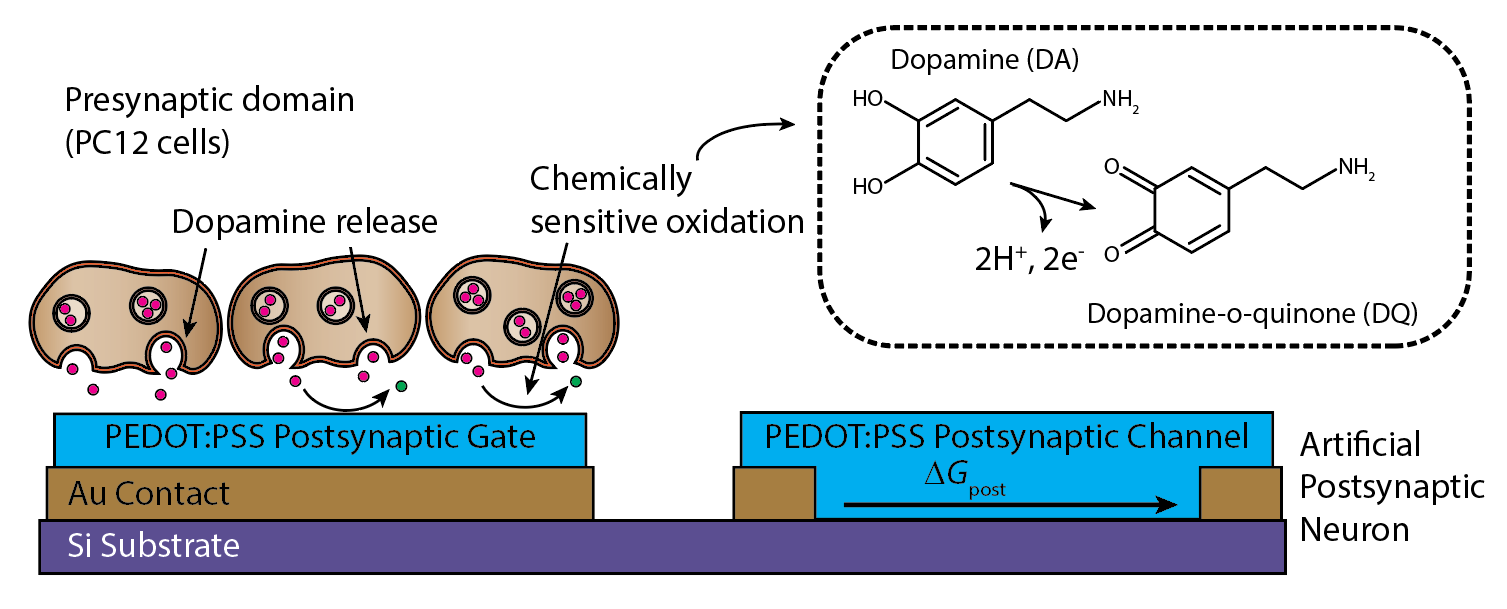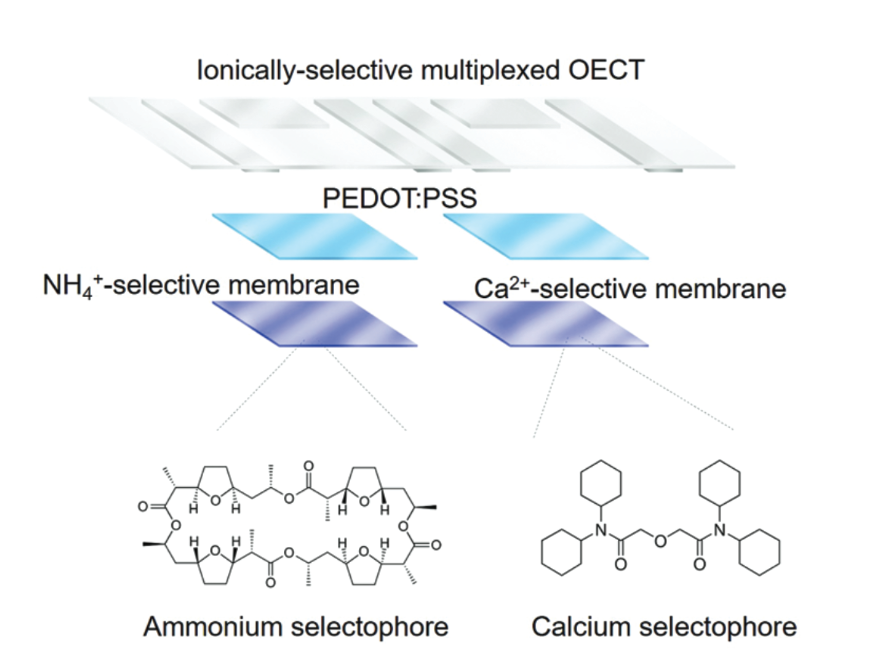
Research
We are dedicated to advancing the field of bioelectronic medicine and neurotechnology by researching and creating innovative materials and devices for the future. Our goal is to leverage the unique properties of conjugated and mixed ionic-electronic conducting polymers to develop new tools for monitoring and manipulating neural activity.
Materials design and characterization
New advanced in operando materials characterization methods are essential for understanding and optimizing bioelectronics materials. By utilizing these techniques, our lab aims to gain valuable insights into the fundamental material properties from the microscopic level to the device scale. We then leverage our findings to tailor the characteristics of conjugated polymers and blends to meet the specific requirements of the next generation of bioelectronic devices.
The relationship between ionic-electronic coupling and transport in organic mixed conductors, Sci. Adv. 9 (2023)
Hole-limited electrochemical doping in conjugated polymers, Nat. Mater. 22 (2023)
Operando NMR electrochemical gating studies of ion dynamics in PEDOT: PSS, Nat. Mater. 22 (2023)
Efficient electronic tunneling governs transport in conducting polymer-insulator blends, J. Am. Chem. Soc. 144 (2022)
Neuroelectronic interfaces
In our lab, we aim to create neuroelectronic interfaces which establish a seamless connection between living tissues and electronic devices. This involves meticulous alignment not only in terms of physical properties but also in ensuring compatibility between the modes of signaling (chemical, ionic, and electronic) involved.
Bioelectronic interfacial matching for superior implant design, Cell Rep. Phys. Sci. (2024)
High capacitance freestanding PEDOT:PSS electrodes for low-frequency electric field delivery, AIP Adv. 14 (2024)
A biohybrid synapse with neurotransmitter-mediated plasticity, Nat. Mater. 19 (2020)
Enhanced cell–chip coupling by rapid femtosecond laser patterning of soft PEDOT: PSS biointerfaces, ACS Appl. Mater. Interfaces 9 (2017)
Biosensors
Biosensors are designed to detect specific biomarkers that provide valuable insight into monitoring the biological communication or the progression of various diseases. By identifying these key indicators, biosensors play a crucial role in enhancing our ability to track, manage, and treat health conditions more effectively. In our lab, we explore new ways of selective detection of biomarkers and design devices to amplify and multiplex sensor outputs.
Pulsed transistor operation enables miniaturization of electrochemical aptamer-based sensors, Sci. Adv. 8 (2022)
Operation mechanism of organic electrochemical transistors as redox chemical transducers, J. Mater. Chem. C 9 (2021)
Wearable Organic Electrochemical Transistor Patch for Multiplexed Sensing of Calcium and Ammonium Ions from Human Perspiration, Adv. Healthcare Mater. 8 (2019)
Molecularly selective nanoporous membrane-based wearable organic electrochemical device for noninvasive cortisol sensing, Sci. Adv. 4 (2018)







